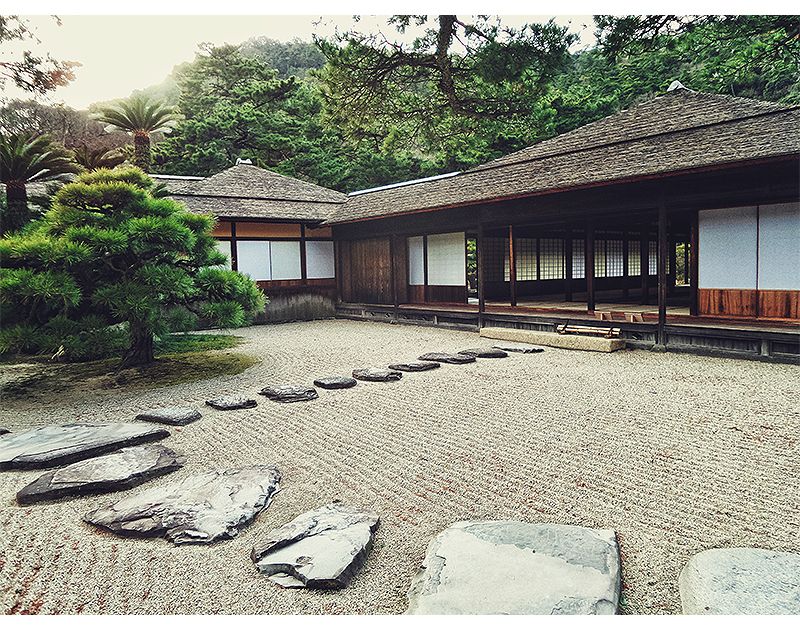For centuries, zen gardens have been carefully landscaped to imitate the tranquility of nature. These miniature landscapes, designed with rocks, sand, and plants, come from Japan and create a peaceful environment for meditation and reflection. Mini DIY zen gardens bring this calming practice to your home or office, offering a pocket-sized oasis for stress relief and mindfulness. You can choose from a traditional, modern, or personalized approach to make your sanctuary a unique and relaxing place. Here are nine ideas to inspire you.
1. Modern Zen Garden
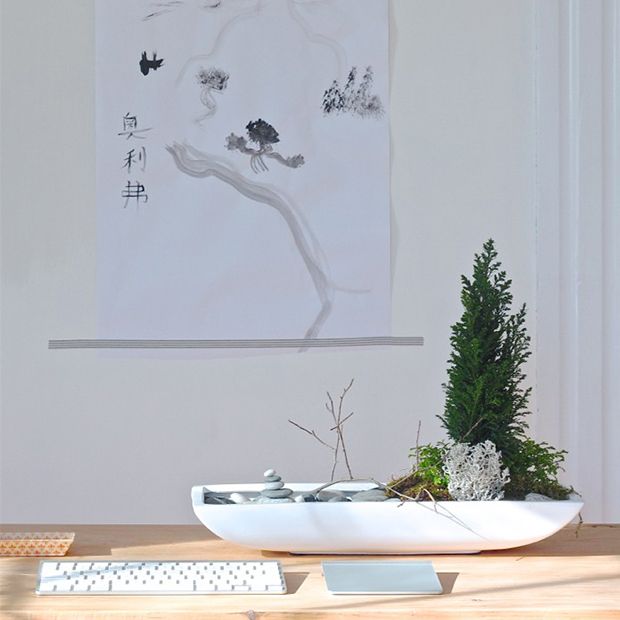
This sleek miniature desk garden looks like a tech accessory, seamlessly blending with your workspace. Use a minimalist container and incorporate geometric shapes to create your own funky but stylish accent piece. Choose fine-grained sand and smooth pebbles for a polished look. Add a small rake or stylus for making patterns in the sand, which can be a helpful meditative practice during work breaks. A tiny feathery evergreen and some moss provide a fresh and lively focal point, contrasting the smooth stones. This guide from Gardenista will walk you through the details of this innovative DIY project.
2. Traditional Zen Garden
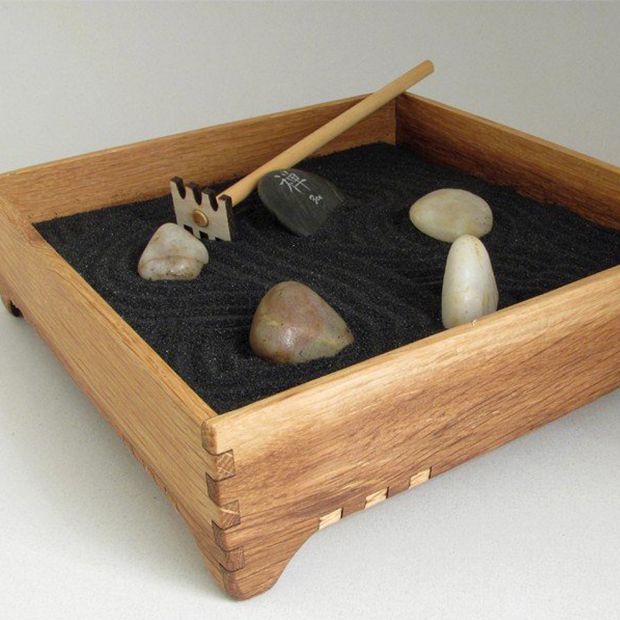
Traditional mini zen gardens stay true to their Japanese roots. These classic designs typically feature white sand or gravel, carefully placed rocks, and miniature plants or moss. To create a traditional zen garden, start with a shallow wooden box filled with fine white sand. Arrange a few rocks to represent mountains or islands. Use a small rake to draw out designs in the sand, like water or waves. Add a small figurine or lantern for an authentic touch and a charming little light source. Traditional Japanese design elements such as a tiny torii gate or a pagoda can also be included to highlight the cultural essence.
3. Resourceful Zen Garden
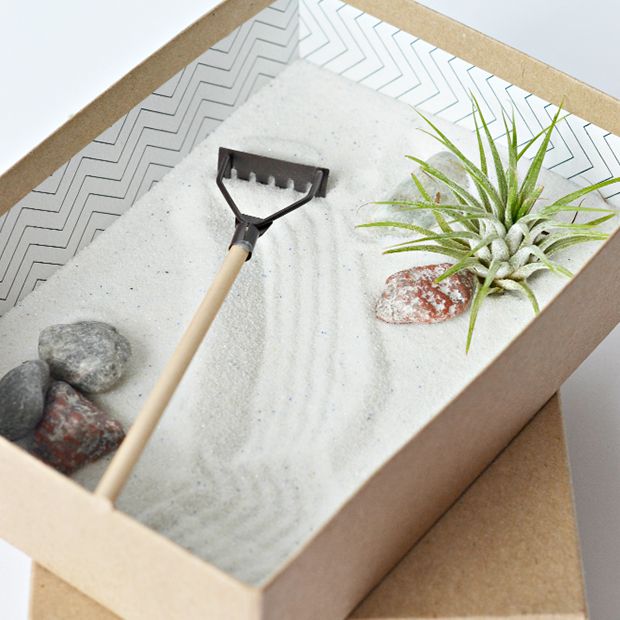
Resourceful zen gardens prove you don’t need expensive materials to create a calming space. Reuse everyday items to create unique designs and bring your visions to life. For example, use a shallow dish, picture frame, or even a cardboard box as your garden’s base. Fill it with sand or fine gravel, then add small stones, beads, or shells you’ve collected. Create patterns using a fork or toothpick. Incorporate miniature toys or trinkets with sentimental value to customize your creation even more. This approach saves money and adds a personal touch to your mini zen garden. Read about how this blogger recycled a box to make a lovely Father’s Day gift.
4. Geometric Zen Garden
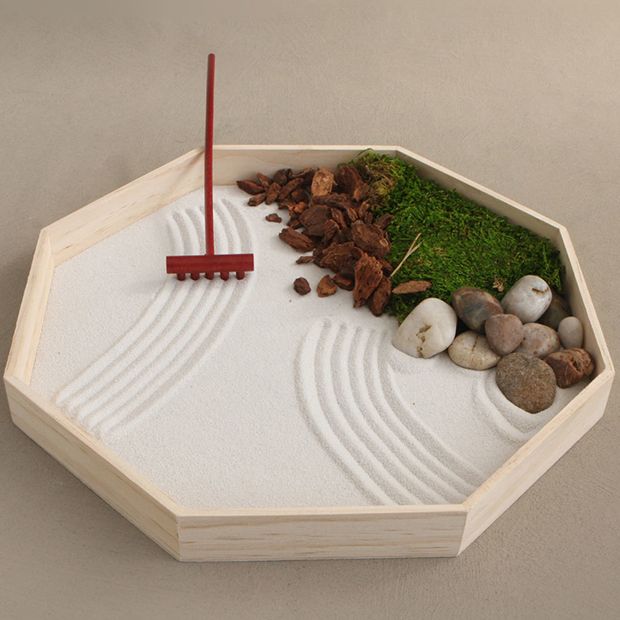
Geometric zen gardens incorporate shapes and patterns for a modern twist on the traditional design. These gardens often feature symmetrical layouts or repeating patterns, and some of the patterns even have a deeper meaning. Start with a container with clean lines, such as a square or hexagonal shape. Use contrasting colors of sand or gravel to create distinct sections. Arrange rocks or crystals in patterns, such as concentric circles or a grid. Add metallic elements or colored glass pebbles to boost the geometric theme further. For contrasting shapes, add organic elements like moss or bark.
5. Succulent Zen Garden
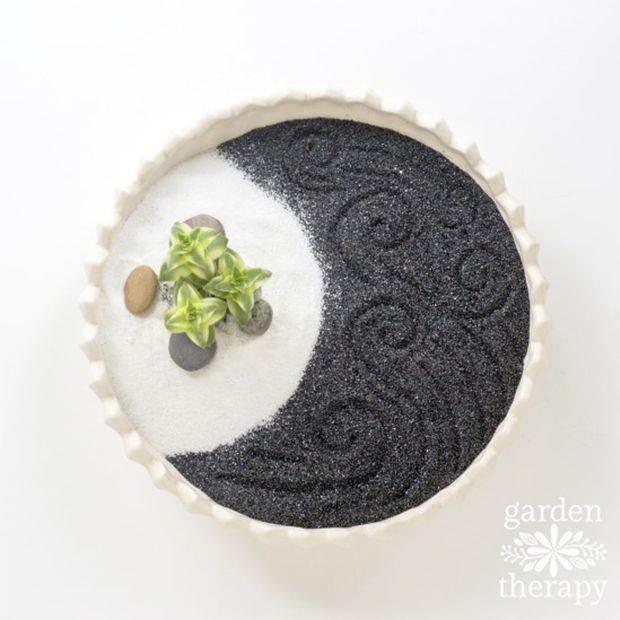
Live plants add a vibrant, natural feel to your mini zen garden. Succulents are a great choice due to their low maintenance and variety of diverse shapes and colors. A succulent zen garden needs a shallow container and a layer of well-draining soil. Arrange the small succulents, leaving space for sand or gravel between them. Use rocks or pebbles to create visual interest and balance. Remember to water sparingly and provide adequate light for your succulents to thrive. You can even add miniatures of your favorite animals for a charming, exotic feel. Here are more tips to help you create your succulent zen garden.
6. On the Go Zen Garden
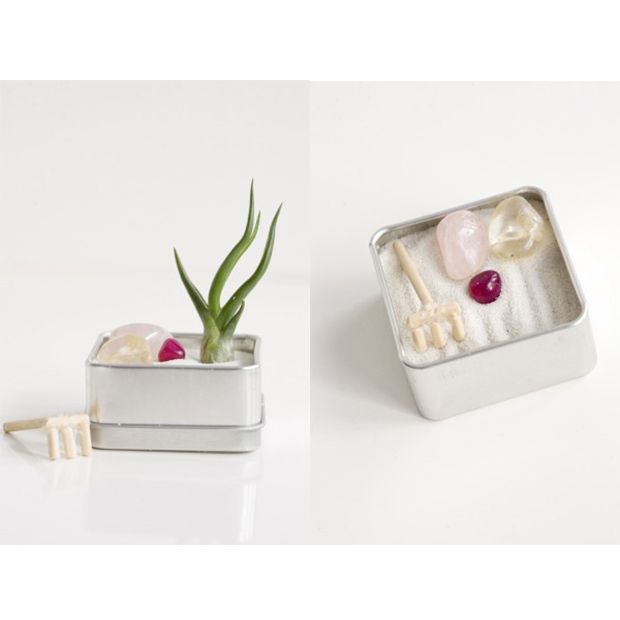
Portable zen gardens let you carry a piece of tranquility wherever you go. These compact designs fit easily in a purse or backpack, giving you a moment of calm during a busy day. Use a small tin or compact case as your base. Fill it with fine sand and add a few tiny pebbles or beads. Include a miniature rake or stylus for creating patterns. Add a lid to keep the contents secure during transport. If the container is large enough, add a tiny piece of zen garden art, like a miniature sculpture or a crystal shard.
7. Pop of Color Zen Garden

While traditional zen gardens often use neutral tones, adding color can create a unique and eye-catching space. Colorful zen gardens can be both calming and stunning. Add dyed sand in your favorite hues, colorful stones, glass beads, or small figurines. Use a brightly colored container as your base. Balance your design by using complementary colors and avoiding overly busy patterns that might detract from the garden’s calming purpose. You can also add colored LED lights to make the colors more vibrant. Read about this beautiful Mother’s Day zen garden project for inspiration.
8. Trendy Zen Garden
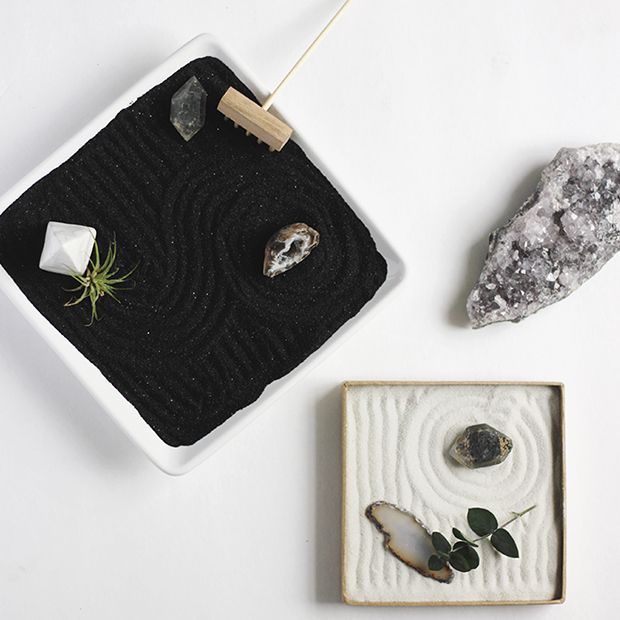
Trendy zen gardens incorporate current design elements while maintaining zen principles. These gardens feature popular materials like crystals, air plants, or geodes. Start with a modern container, such as a concrete or metallic dish. Use black sand for a dramatic base and arrange crystals or geodes as focal points. Add air plants for a low-maintenance green element. Weave in small copper or gold accents for a touch of luxury. Check out this stylish garden from the Merry Thought.
9. Aromatherapy Zen Garden
Create a multi-sensory relaxation experience by adding soothing fragrances to your mini oasis. Fill a base with sand or fine gravel and add small dishes or containers filled with dried herbs or essential oils. Lavender, rosemary, and chamomile are known for promoting relaxation. Use natural elements like pine cones or cinnamon sticks for additional scents. As you rake the sand, the movement will release the calming aromas.
